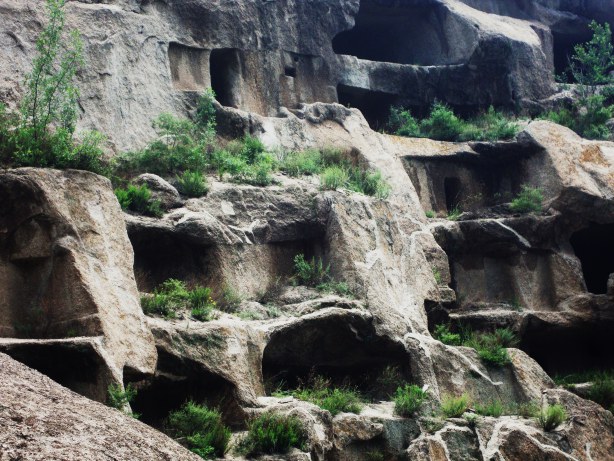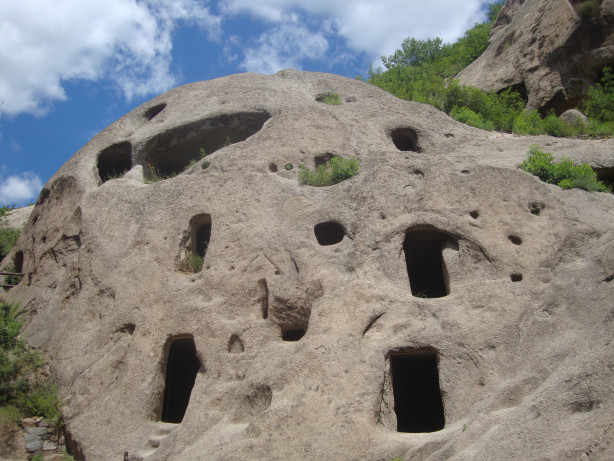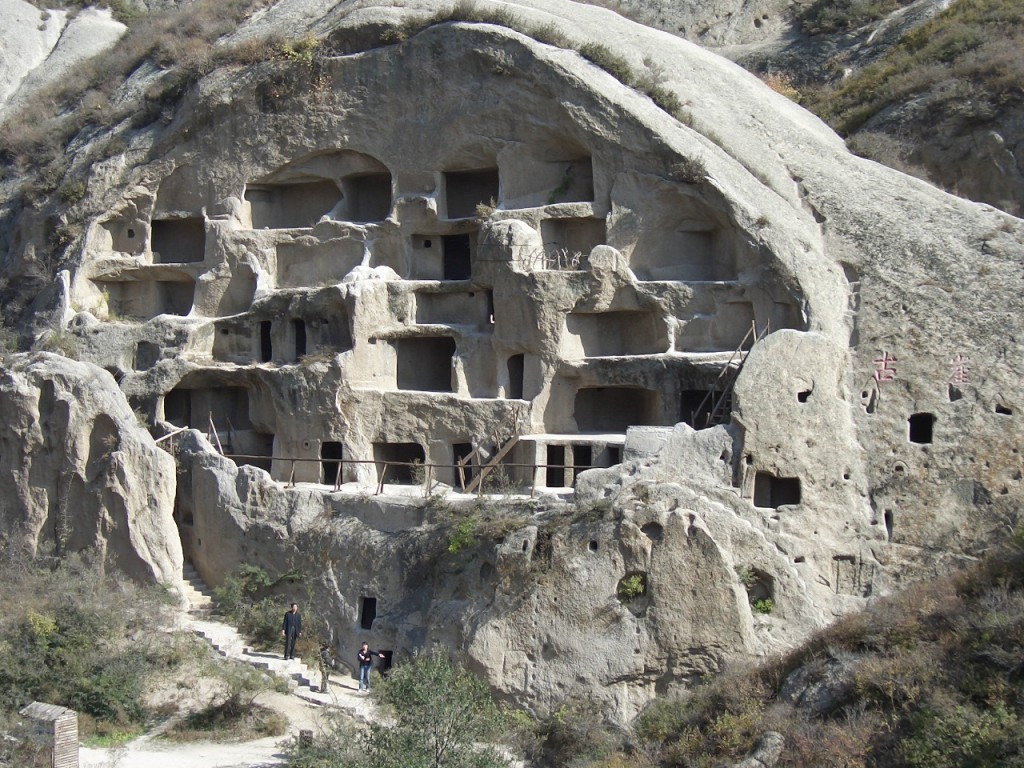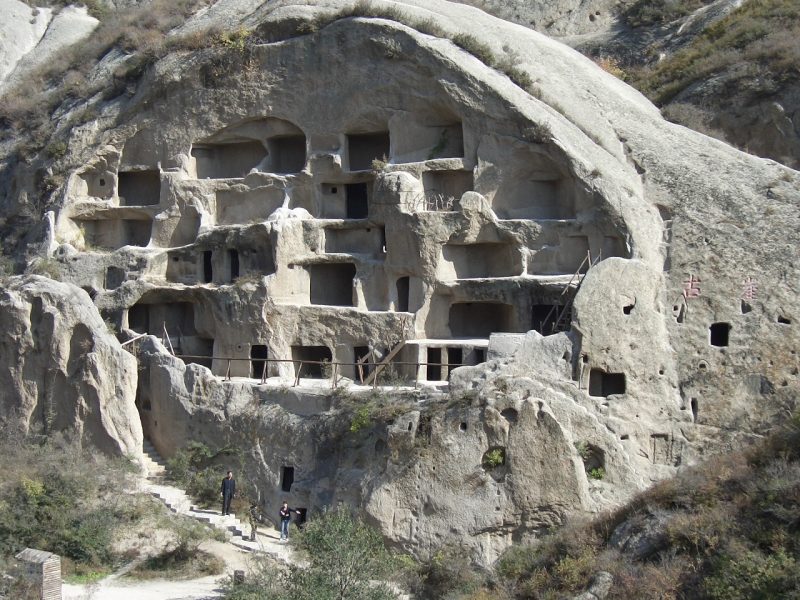Needless to say: Beijing is a mecca for history lovers, urban explorers, archaeologists, people with strong taste buds, adventuresses, basically for any kinds of tourists. Recently we’ve been to this wondrous country and had a chance to visit its historically rich capital. Don’t get us wrong, it’s not in our attention to brag, but just to share our fascination with this amazing country.
While the “must visit” attractions such as The Great Wall, The Forbidden City, The Tiananmen Square, The Summer Palace or The Temple of Heaven are absolutely crammed with people, there is one particular place that is rather difficult to find in the random tour guides.
Just about 80 km north-west of Beijing, nestled in a secluded gorge in the west of Yanqing County, lies a rather spectacular sight of cave homes that most likely associate to Bedrock- the hometown of The Flintstones.

Guyaju Caves, or in translation – Ancient Cliff Dwellings, is a complex of massive ancient caves stretching over 24.7 acres (100,000 square meters) on the steep cliff. But it’s not its massive size or form that we find peculiar and fascinating, but the fact that this cluster of caves has more than 100 carved stone rooms allegedly built by ancient men (maybe Fred or Barnie). Another missing link of this Chinese version of Bedrock is the time of the original excavation as well as its history and use. So, basically all that it is known for these mysterious cliff dwellings is that they have stylishly carved rooms and someone lived in them.

However, there are many theories related to the origins of the stone home, the most popular of them is that they were made by the Kumo Xi People during the Five Dynasties Period (907 – 960) while others believe that they are relics of the Han Dynasty (202 BC – 220 AD). Nevertheless, the uncertainty of the origins of the caves just adds to the intriguing and enigmatic charm.

The ancient cliff counts a total of 174 caves forming a cell-like spectacle. According to calculations made by experts, it needed 100 people to work continuously for five years in order to complete the “cave apartments” ( having in mind these guys had built the Great Wall bare hands, we didn’t find this information as shocking).
The location of the caves in the cliff face resembles to a multi-storied building. Best proof that these rooms are not just a coincidence or a natural phenomenon, are the stone stairs, stone ladders, and bridges connecting the rooms on different floors. The caves are also different in shapes and sizes, but regardless of the shape or the size, they all bear features of modern dwellings.
That this was once a village filled with people, prove the sites of gateways, windows, stone beds, closets, lamp stands, cooking stoves and horse mangers. There is a stone bed in one cave large enough to hold two people. The “presidential apartment” among the cave homes is an exquisite duplex apartment taking the highest place on the cliff, called Guantangzi or Kumo Xi Chieftain’s Mansion. There is a natural spring close to the cliff that was probably the main source for fresh water.
Despite the many failed attempts made by teams of researchers and archaeologists to find the origin of this ancient stone village, there are a visible fact that people had lived here. Guyaju Caves serve as the most awesome time capsule providing abundant relics, from which tourist can learn something more about the folk customs, lifestyle and history of these special ancient people of northern China.
So, if you are on your way to Beijing, and you are like us and would like to rather avoid crowds, than this is the place you should visit.
